
Roof Rat Control
Follow the guidelines below to learn how to get rid of ants inside and outside your home.
December 16th, 2023
How to Get Rid of Roof Rats
While having rats is never a good thing, eliminating them doesn't need to be a huge ordeal. With the right supplies and guidance, you will get rid of roof rats successfully and safely.
Start your roof rat population control treatment plan with an inspection. After that, get rid of their food sources, properly sanitize the area, seal all entry points, and follow these guidelines for rat bait and rat trap placements.
Top Methods to Get Rid of Roof Rats
Sanitation & Exclusion
Sanitize all affected areas and remove all rubbish, woodpiles, and pet food containers. Next, eliminate the roof rats by blocking off their entry points into your home. Seal off any cracks and trim all tree branches back.
Rat Trapping
This method is a good option for those not wanting to use rodenticides. If done correctly, trapping can give quick results if the rat population is small enough. Using snap traps also guarantees that the dead rats may be disposed of before their odor becomes an issue in an inaccessible area.
Rodent Bait
Rodenticides are poison baits that should only be used in places away from domestic animals and children. Use tamper-resistant bait stations to keep the bait in place and away from animals and children.
Be patient in trapping and baiting. It may take a few days for them to adjust to a new change in the environment and take the bait or get trapped.
Key Takeaway:
Trapping is more time-consuming, but it is the most effective technique to avoid odor issues caused by rodent baits.
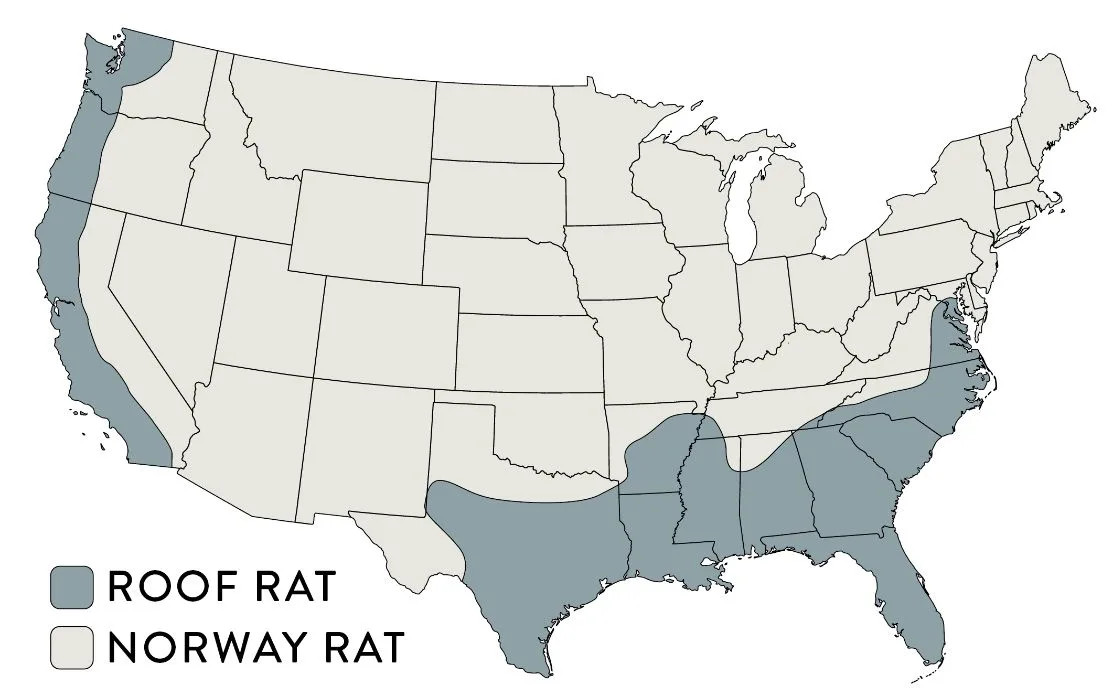
Identify
For effective rat removal and control, you must first determine what type of rat you are dealing with.
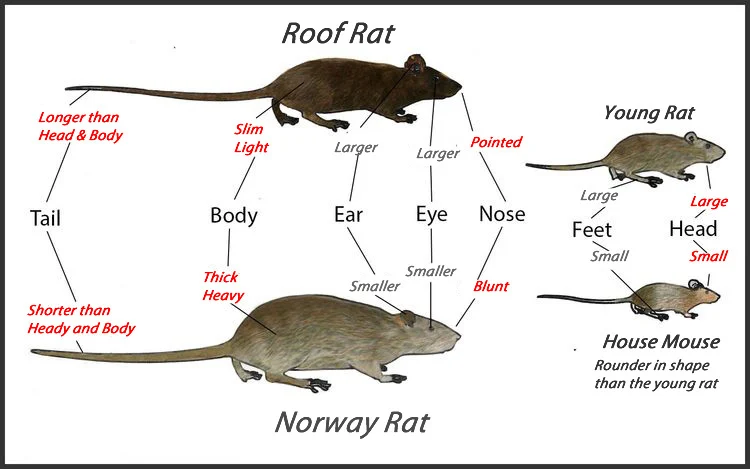
What are Roof Rats?
The roof rat (Rattus rattus Linnaeus) is a common rodent that can be found in the roof and attic of homes. Because they do not adapt well to lower temperatures, roof rats are typically found along the coast of the United States. The roof rat is also called other names, including palm rats, gray- or white-bellied rats, black rats, tree rats, fruit rats, and ship rats.
Are Roof Rats Dangerous?
Roof rats are considered dangerous pests for a number of reasons. They chew through wooden structures and can make a filthy mess and lead to your home's structural damage. Roof rats may also chew through electrical cables, leading to an increased risk of power outages and even fire.
These rats are the most infamous rat species for their transmission of the bubonic plague that killed upwards of 200 million people across Europe in the Middle Ages.
Although transmission is much less common in the modern era, they have been known to transmit disease and serious illnesses such as typhus, infectious jaundice, salmonella, and rat-bite fever.
Rat-bite fever causes severe nausea, vomiting, headaches, chills, and muscle aches. Skin irritation, rashes, ulcers, joint pain, and inflammation of the lymph nodes are also common.
They can carry fleas and even cause food poisoning by contaminating food preparation surfaces or even the food itself.
Roof Rats vs. Norway Rats
Roof rats are sometimes mistaken for the Norway rat because both rodents commonly infest homes. However, this rat is far smaller in size than the stockier Norway Rat. Roof rats also have much longer tails and slimmer bodies than Norway Rats. The fur of the Norway rat is rough and shaggy, but the fur of the Roof rat is smooth.
Roof rats are much more sensitive to changes in the environment than Norway rats. This is why you commonly see roof rats in attic areas because of the stable, warm conditions. Do keep in mind that the tail markings and hind feet markings of the Norway rat and the roof rat are hard to differentiate from each other.
Roof Rat Identification
Roof rats have pointed noses and soft fur with large ears and eyes. They also have a scaly tail that is narrow, thin, and much longer in length than their head and body length combined. If you pull the tail back over the body, it will stretch over the roof rat's head.
Because of their pointed noses and large ears, roof rats are sometimes mistaken for house mice. House mice have much smaller heads and feet than their bodies, while roof rats have larger heads and feet than their frame.
The adult roof rat is approximately 7-10 inches long and weighs 5-9 ounces. They are brown and black in color on the top of their bodies. Underneath, roof rats have gray, white, or black markings.Because of its darker fur, this species is also commonly referred to as the black rat.
Roof Rat Diet
Roof rats eat meat and grain but have a particular liking for fresh fruit, vegetables, seeds, and nuts. They will also eat snails, slugs, and insects. This is why you will commonly see roof rats in attic areas move outside to find fruit trees, dense vegetation areas, and organic matter.
Roof rats eat smaller portions of food compared to Norway rats. They will naturally eat in several different places, which will be an important strategy when you bait and trap. It is more important to place more rat traps and bait placements in several locations.
Roof rats prefer to feed undercover and seek shelter when feeding. Bait stations will provide them with the shelter that they prefer.
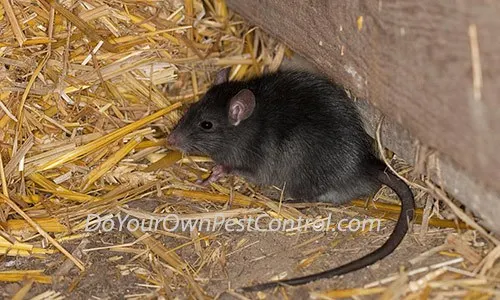
Key Takeaway
Roof rats are good climbers and are more likely to enter the home around the gutters or attic vents.
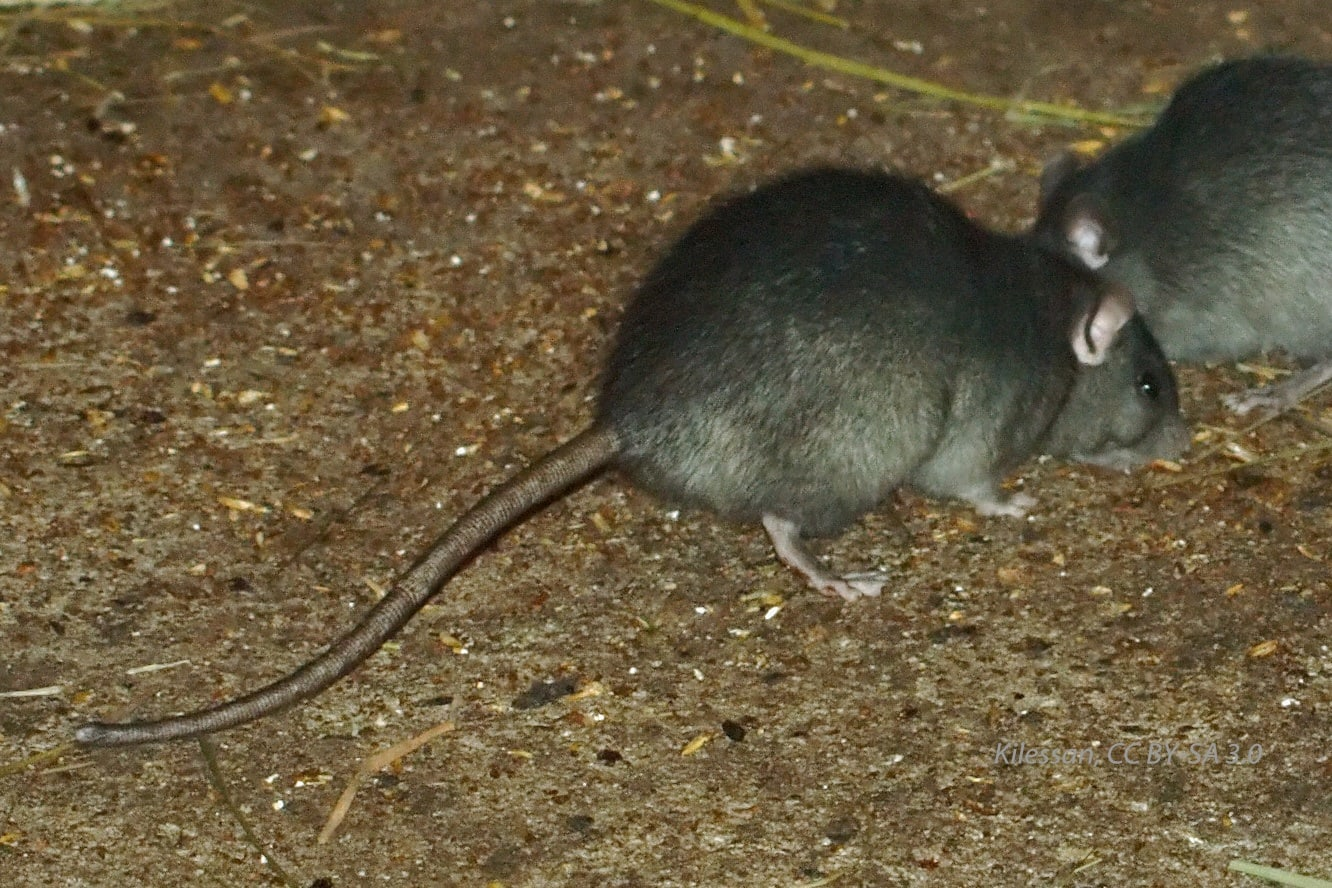
Roof Rat Inspection for Effective Rat Removal
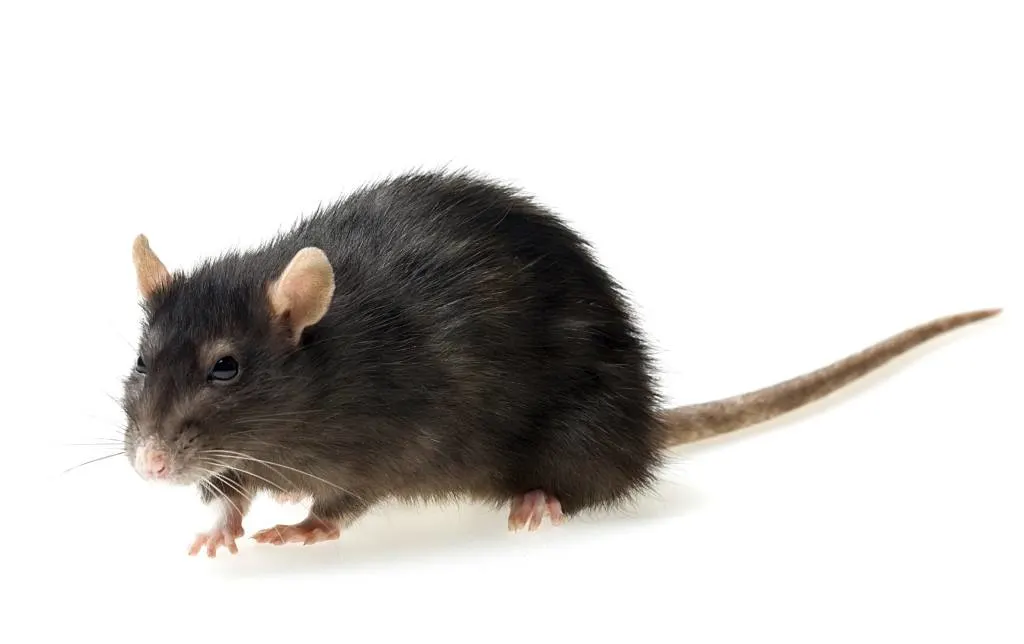
Habitat - Roof Rats
In any home, the roof and attic are prone to pest infestations. Roof rats prefer to set up their nests in the upper area of homes, like the roof or attic, because it is warm and sheltered.
Roof rats are most active at dawn or dusk since they are nocturnal, so it's a good idea to perform an inspection at these times.
They will chew through anything they find up there, such as electrical wires, power lines, and shingles. Since rats can eat through electrical wires, it is important to get rid of rats in attic areas quickly to prevent possible power issues.
When inspecting for roof rats, look for their droppings. If you find droppings or spot the actual rodent running around your house, it is important that you perform a proper inspection of your property.
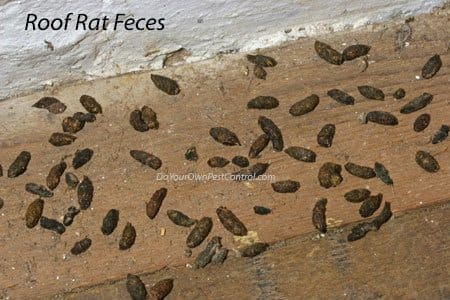
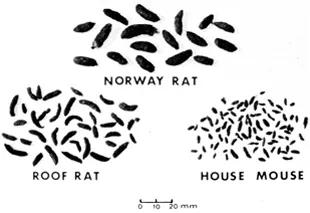
Roof Rat Droppings
Be on the lookout for possible roof rat droppings. To do this, you must first understand what these droppings look like. Roof rat droppings are spindle-shaped and are about 1/2 an inch in size. The droppings are soft and moist when new, but hard and dried when old.
In comparison, the droppings of Norway rats are much larger and have a capsule shape with dull edges.
Roof Rat Inspection
Knowing where to look on your property for possible signs of an infestation is crucial if you want to effectively get rid of roof rats.
Look for Signs of Damage
Roof rat activity is indicated by the discovery of bite marks, damaged goods, nests, or greasy rub marks. Roof rats love to make tunnels through insulation, so it is very common that they will leave behind chew marks in wood, pipes, or walls throughout your home.
Perform a Complete House Inspection
Inspect your home's foundation, interior walls, roofline, and the areas surrounding the utilities entering your home for any droppings. If any cracks or gaps are found, seal them off.
Signs of a Roof Rat Infestation
A common indicator of a rodent infestation is hearing faint noises in the attic, inside your walls, or on the roof of your home. If this is the case, head straight to these areas and look for chew marks, droppings, or loose electrical wires.These will be the most common clues of roof rat infestations.
Inspect Electrical Wires
Roof rats, particularly rats in attic areas where power lines or electrical wires are present, are commonly found near power lines inside the home. If you have experienced a power shortage recently, this may also be a sign of roof rat infestation.
Inspect the electrical wiring system inside your home as best you can. Look for any damage as well as gnaw or chew marks around the wires. Damaged electrical wires are a common sign that roof rats have entered the home.
Check Outside Vegetation Areas
The roof rat, also known as a fruit rat, enters homes and gets on top of roofs by climbing vines and along tree branches or fruit trees outside. It's a good idea then to inspect any tree branches, dense vegetation, and loose firewood around your property for roof rat droppings.
Top Tips for Roof Rat Inspection
-
Check for any chew or gnaw marks inside and outside
-
Inspect your home's attic, roof, interior walls, and foundation
-
Look out for loose or chewed electrical wires
-
Outside vegetation should be removed and inspected for droppings
How to Prevent Roof Rats in Attic
The best way to prevent roof rats and practice roof rat control is proper hygiene and eliminating any entry points in your home. You should also understand roof rat habits and where they are likely to build their nests and find food. This can only be achieved with correct identification and inspection.
-
Trim back tree branches away from the exterior of your property.
-
Remove all brush piles and debris that would give roof rats a place to hide and build nests.
-
Keep any firewood you have on your property away from the house's exterior, and make sure your garbage cans and compost bins have lockable lids.
-
Seal off any holes or gaps that may be lurking in your home's foundation, walls, or doorways. Roof rats nest in trees, attics, voids along the roofline, and in ceilings, so be sure to check here frequently.
-
Inspect your attic regularly and look out for any signs of chewed wood or electrical wires.
-
Roof rats climb fruiting trees, so routinely pick fruits to make your trees less appealing to these hungry animals.
How To Get Rid of Roof Rats
Follow these guidelines to learn how to get rid of rats, roof rats, as well as rats in the attic.
The roof and attic is vulnerable point in any house. Roof rats love living on top of homes and attics and will chew through anything they find up there, such as wiring and shingles. Since rats can eat through electrical wires, it is important to get rid of rats in your attic. It is also essential to ensure that any holes or gaps in your house have been sealed off so the rats can't get into your home. Start your rat control treatment plan with an inspection, then get rid of their food sources. After that, follow these guidelines for rat bait and rat trap placements.
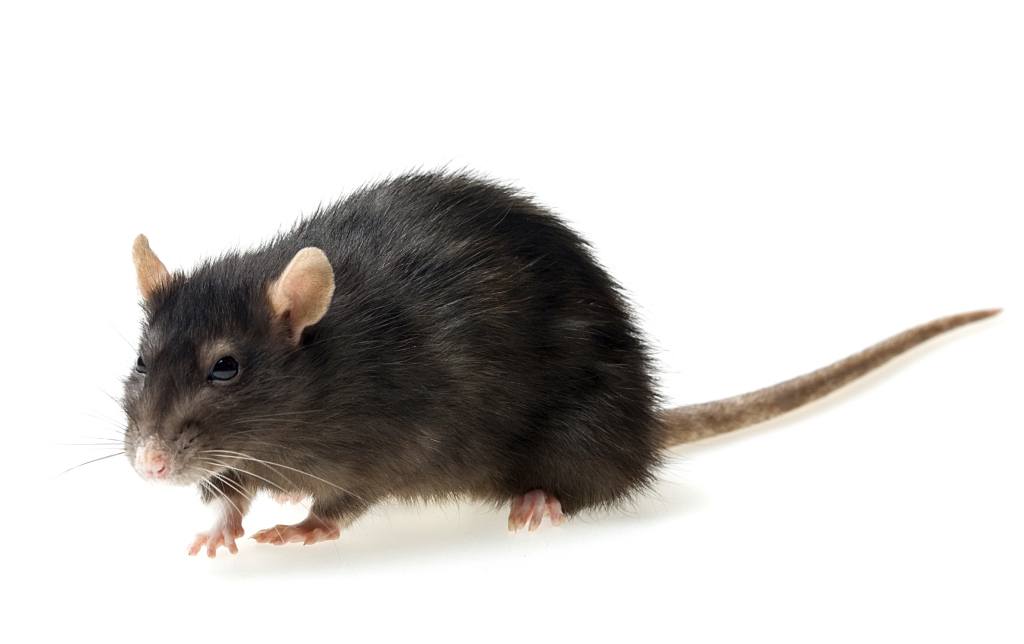
The Roof Rat (Rattus rattus Linnaeus) is smaller in size than the Norway Rat. Another difference is that the Roof rat is more slender with a longer tail than the Norway rat.
The Roof rat is also called gray-bellied rat, white-bellied rat, Alexandrine rat, black rat, and ship rat. Its origins go to Southeast Asia's tree forests and are adept at climbing vines, wires, and narrow ledges. They are located in the USA's coastal areas since they do not adapt well to cooler temperatures. It is a more skittish rat than the Norway rat, being sensitive to any new environment change.
They are common rodents in attics if found inside. Many times, you may hear them in the walls or attic area. When inspecting for roof rats, look for their droppings.
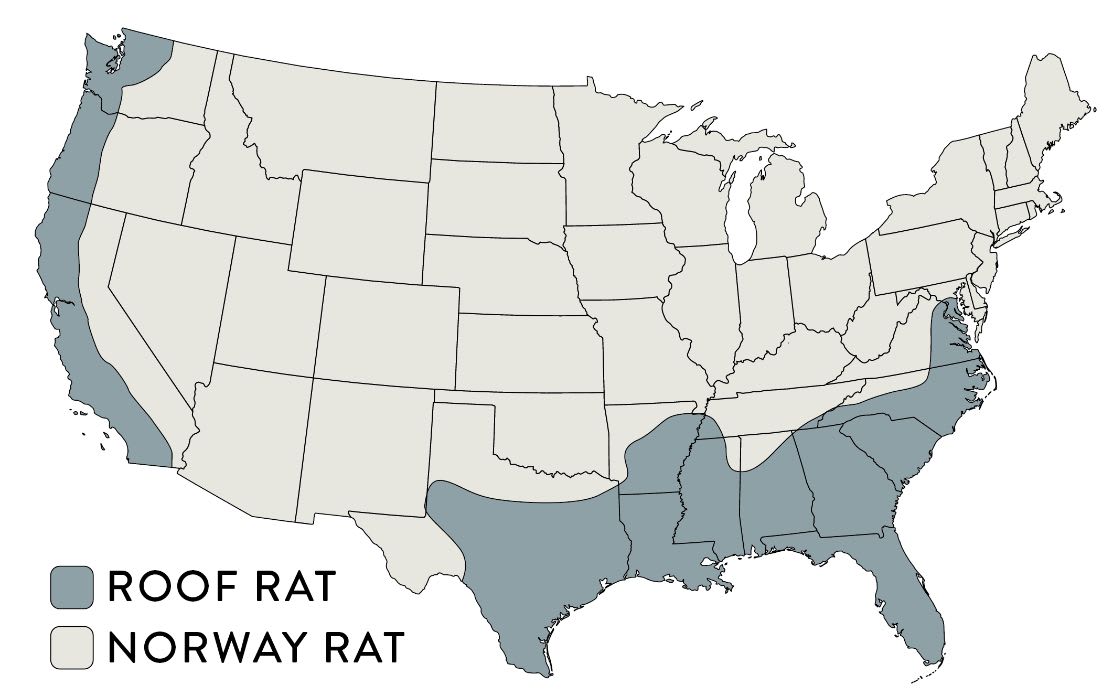
Roof Rat Identification
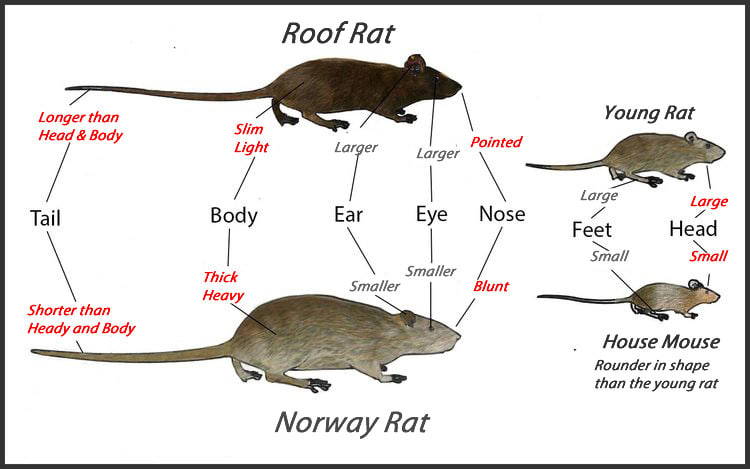
Roof rats have pointed noses and large ears and are often mistaken for House Mice. The head and feet of adult house mice are proportionally smaller than their bodies, while young rats have larger heads and feet than their bodies.
The Roof rat's fur is smooth, while the Norway rat's fur is rough and shaggy. The adult Roof rat is about 7-10 inches long and weighs about 5-9 ounces. The Roof Rat has a long tail, which is longer than the head and body's combined length. If you pull the tail back over the body, it will reach over its head.
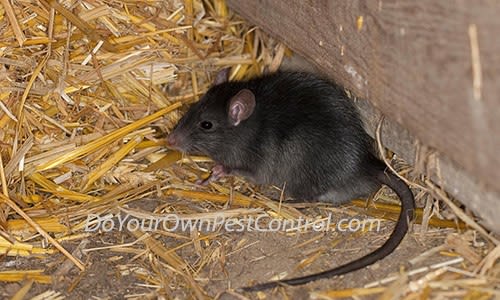
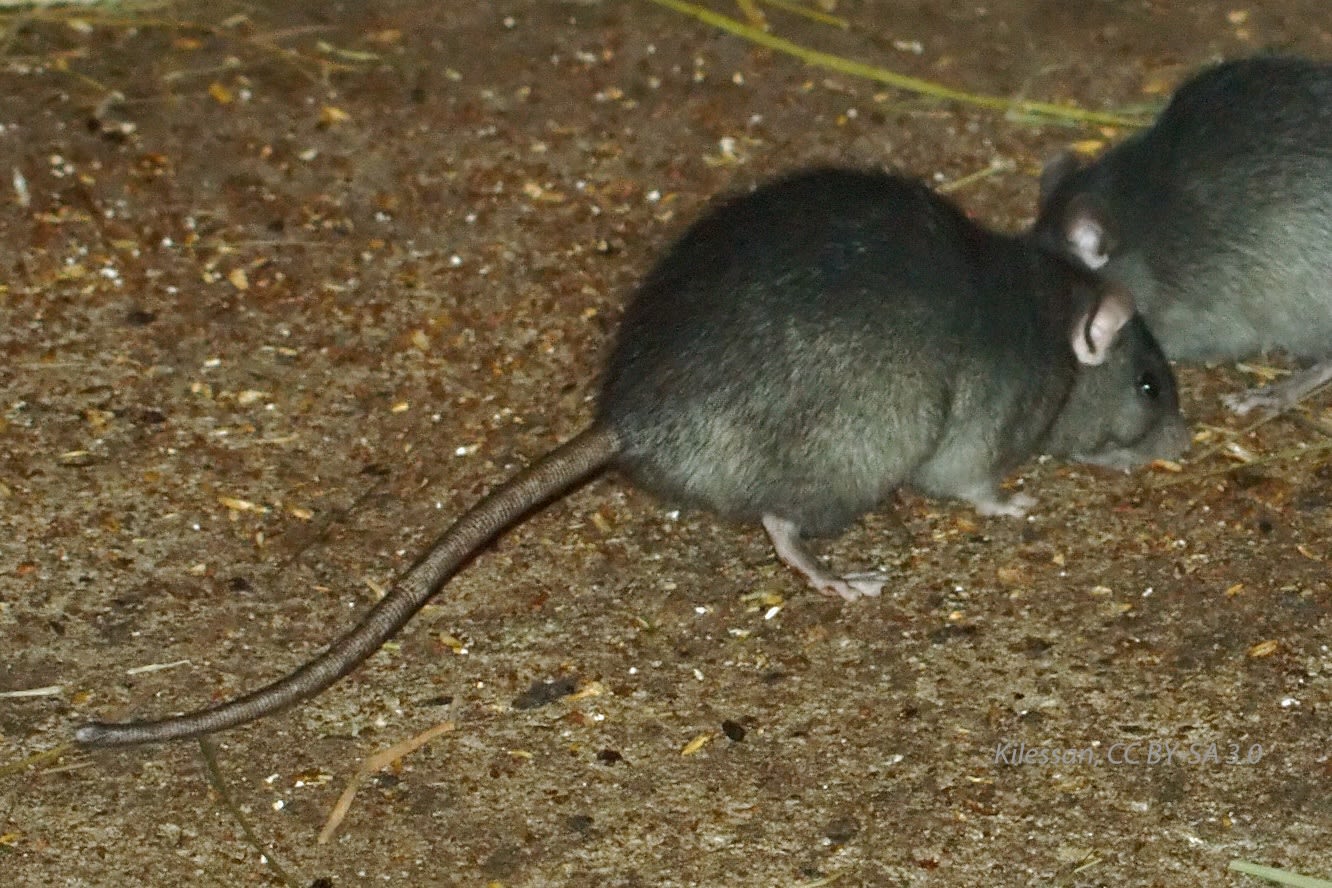
Roof Rat Inspection
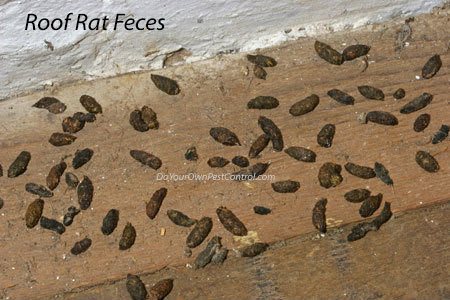
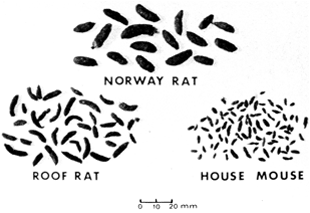
- The Roof Rat Feces (droppings) are spindle-shaped and reach about 1/2 inch in size. The Norway Rat's droppings have a capsule shape.
- Roof rats will also make tunnels through insulation and will leave chew marks (wood, pipes).
- The tail markings and hind feet markings of the Norway Rat and the Roof Rat are hard to differentiate between each other.
- Runways for Roof Rats may be difficult to determine; look for their feces.
Refer to the section on Rodent inspection.
How To Get Rid of Roof Rats
While having rats is never a good thing, eliminating them doesn’t need to be a huge ordeal. With the right supplies and guidance this is a job you can do.
The most common rats in the USA are Norway Rats and Roof Rats. A quick look at the habits of both will help you understand how to inspect and control the rat population.
Roof Rat Diet and Biology
Roof Rat Diet
Roof rats will eat meat and grain, but their preferences are fresh fruits, vegetables, seeds, and nuts. They will eat snails, slugs, and insects as well. Roof rats will eat smaller portions of food compared to Norway rats.
They will naturally eat in several different places, which will be an important strategy when you bait and trap. It is more important to place more traps and bait placements in several locations.
They prefer to feed undercover and seek shelter when feeding. Bait stations will provide a shelter that they prefer.
Roof Rats Habits and Biology
- The Roof Rats become sexually mature in just a couple of months. Females become sexually mature in 68-90 days with 5-8 pups per litter. They have 4-6 litters per year.
- Because the Roof Rats climb well, common nesting sites are above the ground. They will nest in trees, attics, voids along the roofline, and in ceilings. Like squirrels, they enter homes and are found in attics. In the absence of Norway rats, or if their population grows, they can be found in burrows or piles of rocks.
- Dense vegetation, lush landscapes, fruit trees, dog areas will attract Roof rats. They seek cover. They will also construct globular leafy nests in trees and enter buildings by tree branches, utility lines.
- Roof Rats are suspicious like Norway Rats. Be patient in trapping and baiting. It may take a few days for them to adjust to a new change in the environment and take the bait or get trapped.
- Peak times for Roof Rat activity is at dawn or dusk; they are nocturnal. If they are heard during the day, the population is large.
Refer to the section on Rodent inspection.
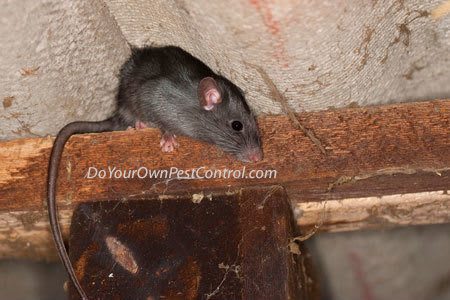
* By Kilessan (Own work) [CC BY-SA 3.0 (https://creativecommons.org/licenses/by-sa/3.0)], via Wikimedia Commons
Key Takeaway
Roof rats are good climbers and are more likely to enter the home around the gutters or attic vents.
Written by our resident pest control expert Ken Martin.







